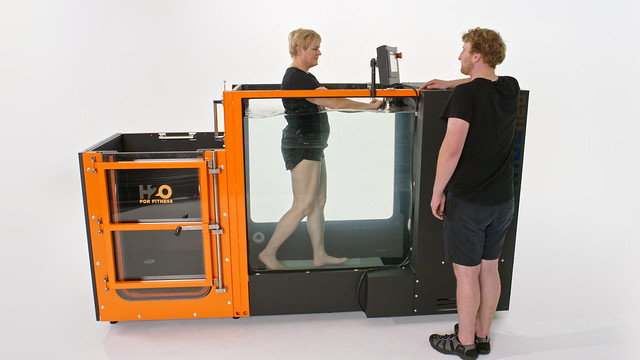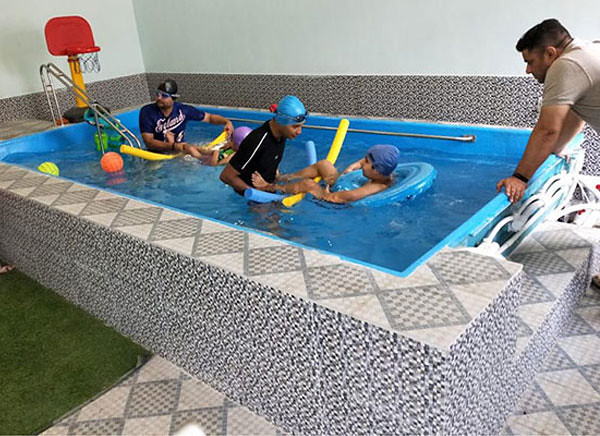Aquatherapy with the underwater treadmill has found its way into animal physiotherapy – with great success! You know the effect from the swimming pool: gravity is almost eliminated in the water – muscles can be trained in a much more differentiated, effective, and gentle way, the stress on the joints is reduced to a minimum, overexertion is effectively prevented.
These physiological advantages now also benefit dogs whose musculoskeletal system is to be carefully rebuilt and strengthened after injuries, illnesses, or operations.
Dogs, just like humans, can suffer from lifestyle-related problems that cause pain in locomotion.
These problems include obesity, lack of exercise, diseases of the musculoskeletal system such as osteoarthritis, spondyloarthritis, injuries and operations such as cruciate ligament injuries, and breed-related impairments such as hip dysplasia.
In the water, muscles, tendons, bones, and joints are relieved of the burden of body weight. Movements are possible with little pain. At the same time, the water resistance makes the training more effective than “on land”.
An additional therapeutic benefit comes from the temperature: warm water relaxes breathing and muscles, cool water protects the circulatory system from overheating.
An underwater treadmill makes training for the dog particularly safe. Sudden turns or stops cannot occur. Running is even better than swimming.
It trains exactly those processes that are required for locomotion. It is also often used by veterinarians in orthopedics and neurology and thus supports healing and veterinary treatment.
Exercising on the underwater treadmill is not suitable for dogs that have heart disease, lung disease, or tumors. Dogs suffering from epilepsy should also not exercise on the underwater treadmill as it can be a stress inducer.


